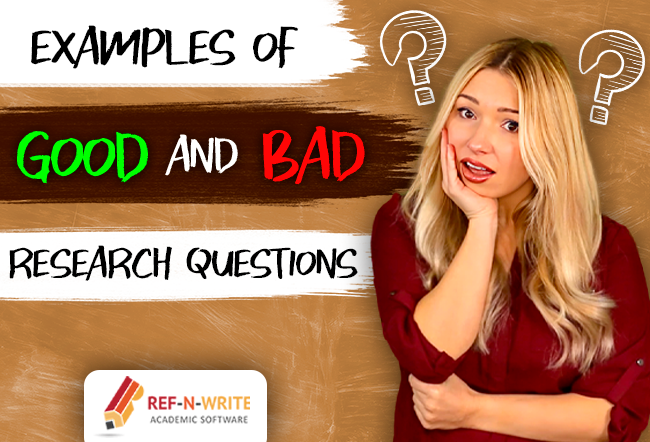Abstract | Introduction | Literature Review | Research question | Materials & Methods | Results | Discussion | Conclusion
In this blog, you will learn how to write the literature review section of a research paper. We will go through many literature review examples and understand different ways to present past literature in your paper.
1. What is the purpose of a literature review?

A literature review is a summary of previous research on your chosen topic. The purpose of the literature review is to let your audience know what others have done in your line of research. The literature review is not about providing a shopping list of past papers. You should structure your literature review so that it flows logically, and provides just the right amount of information to your readers.
2. What should be the length of the literature review?

The length of the literature review section varies from discipline to discipline. Typically, in a standard research paper, the literature review occupies 1 or 2 paragraphs. However, if you are dealing with a topic that requires a strong theoretical foundation, then a significantly longer literature review might be required.
3. How should you structure your literature review?
Generally, in your literature review, you can talk about the following things.
4. Literature Review Examples
Let’s look at some examples of literature reviews. We will be looking at examples from different subjects and of different formats.
4.1 Example #1 (Social sciences research paper)
Typically in a literature review, you start with broad issues, and then you narrow it down to specific issues. Then, you keep narrowing it down until you reach the articles that are most relevant to your research question.
This literature review example is from a social sciences research paper. The authors have started broadly by saying that the research on mental health is quite varied, and it ranges from medication to therapy. Then, they narrow down the topic to the impact of social factors on depression, and cite a few papers. Then, they further narrow it down to the role of corporate in providing mental health support for their employees. Now, this directly relates to their research problem.
Extensive academic research addresses the topic of mental health in a wide range of contexts, from medication [1-3] to therapy [4-6]. In recent years, research has only begun to examine the impact of social factors on depression [7-8]. Even more recently, marketing research has begun to examine the role of corporate responsibility in promoting mental health support for employees [9-10]. In fact, in the only two such studies that have been conducted to date on this issue, inconsistent findings have been reported. Obviously, more studies are needed.
_ Broad summary _ Narrowing down _ Further narrowing down _ Research gap
Then, they explain the research gap. They are saying that there aren’t many previous studies on the topic. In fact, there are only two studies that have been conducted on this topic so far, and the results of those studies are inconsistent.
As you can see the review flows very well. It goes from broad to specific, and nicely finishes off with the research gap.
4.2 Example #2 (Physics research paper)
One of the important qualities of a good literature review is sequentially explaining the events that led up to the current situation.
Here is a literature review example from a physics research paper about atomic theory. In this example, the authors have summarized almost 1000 years of research work in three to four lines. The authors have chronologically provided major theories presented by prominent authors over time.
In the first approach proposed by Democritus (400BC), a Greek philosopher, suggested that matter is made up of small particles called atoms [1]. The method was further extended by Dalton (1808), who proposed the atomic theory, known as Dalton’s Atomic Theory [2]. Niels Bohr (1913) proposed an alternative suggestion; that the electrons of an atom revolve around a centrally placed nucleus [3]. In more recent work, physicists have successfully created a “giant atom”, these atoms are created at very cold temperatures and are held together by a weak bond [4].
_ First major work _ Second major work _ Third major work _ Most recent work
They start with the first approach presented by Democritus in 400 BC. Then they talk about Dalton’s and Bohr’s theories published in the 18th and 19th centuries respectively. Finally, they talk about the most recent work in the field.
Pay attention to the use of phrases such as ‘In the first approach’, ‘was further extended by’, ‘proposed an alternative suggestion’, ‘in recent work’. These phrases are used to connect the events together and make the text flow better. This passage is a very good example that demonstrates how to logically structure your literature review.
4.3 Example #3 (Business research paper)
When you are dealing with large amounts of literature, it is a good idea to group them by ideas before presenting them in your literature review.
Here is a literature review example from a business paper that deals with the consumer behavior of the older population. The author starts with a broad statement stating that there is a lot of literature on the topic of consumer behavior. Then, the author has grouped articles by ideas, and then presented them in the text. As you can see that almost 20 references are cited in the first two lines.
There exists a vast amount of literature on the topic of consumer behaviour [1-5]. Existing literature on the consumer decision-making process generally explores: Personal factors [6-8], Age factors [9-11], Psychological factors [12-15] and Situational factors [16-20]. There are very limited published previous research findings related to shopping behaviours of older population. This study, to the best of our knowledge, represents the first attempt to fill the void in the literature.
_ Broad summary _ Grouping works by ideas _ Research gap _ Novelty of the work
Then, the author establishes the research gap and explains what is unique about their study. They are saying that there are plenty of studies about general consumer behaviour, however, there are very limited studies that specifically deal with the consumer behaviour of the older population. And their study represents the first attempt to investigate this issue.
You can follow this format of literature review when you are short of space but have to include a lot of references.
4.4 Example #4 (Medical research paper)
Here is an example of a literature review from a medical paper. Here, the authors talk about a controversial and debated topic in literature. The authors say that the evidence linking cycling and male fertility is somewhat mixed. Some studies say that cycling improves fertility since it is good exercise. Whereas other studies say that it is bad because it actually damages the prostate.
Most studies examining the mechanisms linking cycling to male infertility have had conflicting results and is a heavily debated topic [1-2]. Until last decade, there was a general consensus among researchers that cycling improves male fertility [3-9]. The results of the recent large scale multicenter study by Elan et al [10], in contrast to previous studies, showed cycling weakening the prostate tissue causing infertility among males. Due to lack of clear evidence, the link between cycling and male infertility remains unclear.
_ Debated topic _ Mixed/controversial studies _ Research gap
The authors say that there is a lack of consensus among researchers about this. And we are still not sure which claim is correct, so there is a research gap here. As you can see, the authors have made their case for further research very elegantly by providing evidence that supports both sides of the argument.
4.5 Example #5 (Health sciences research paper)
Here is another format of literature review that you can follow in your paper. You can talk about a few studies with similar themes or theories at a time. Then you stop and provide your opinion on the studies. You can either summarise the findings or point out the drawbacks of the studies. Then you move on to the next set of studies and do exactly the same.
The simplest approach to deal with weight gain is cutting down food intake [1-3]. This type of diet is hard to maintain, and individuals might be missing out on essential nutrients. An alternative solution is using an intragastric balloon [4-6]. However, this method is expensive and has some life-threatening symptoms and complications. Another solution is to follow a rigorous exercise routine [7-10]. This can increase the risk of injuries. Because of these limitations, there has been significant interest in finding the right treatment for obesity.
_ Method 1 _ Critique 1 _ Method 2 _ Critique 2 _ Method 3 _ Critique 3 _ Research gap
Here is a literature review example from health sciences paper, this review is about methods to reduce weight. We start by talking about the papers that deal with fasting techniques. Then, we explain the drawbacks of fasting. Then, we move on to papers that deal with surgery as an option. Then we explain the drawbacks of surgery. Then, we move on to papers that propose exercise as a means to tackle weight gain. Then, we explain the drawbacks of exercise. And then finally, we are stating the research gap.
The literature review flows very well, and the author tells a nice story by logically presenting various techniques and critiquing them at the same time.






